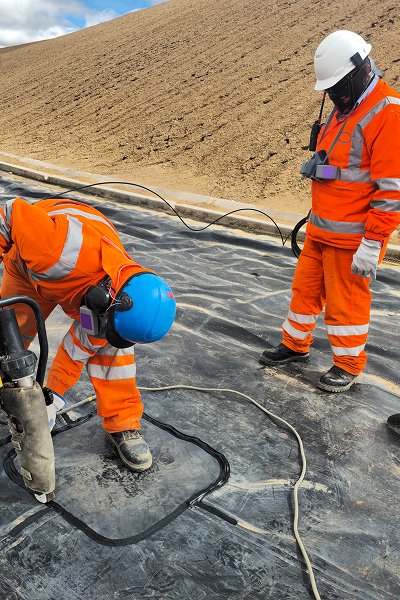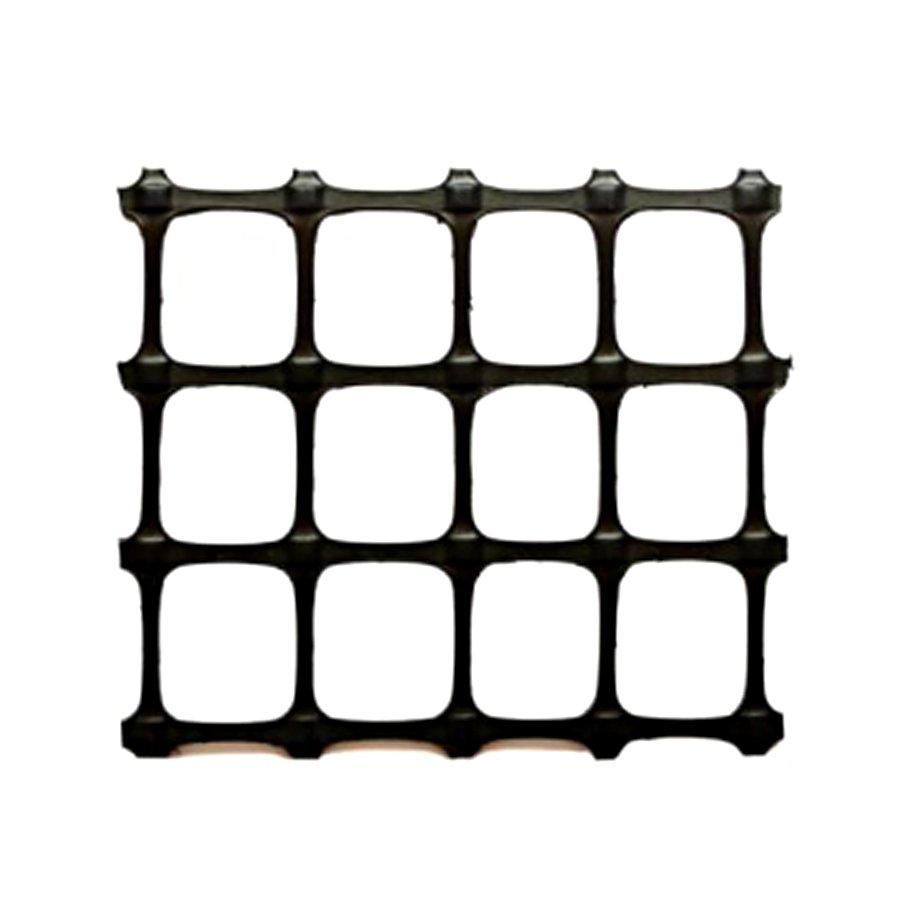
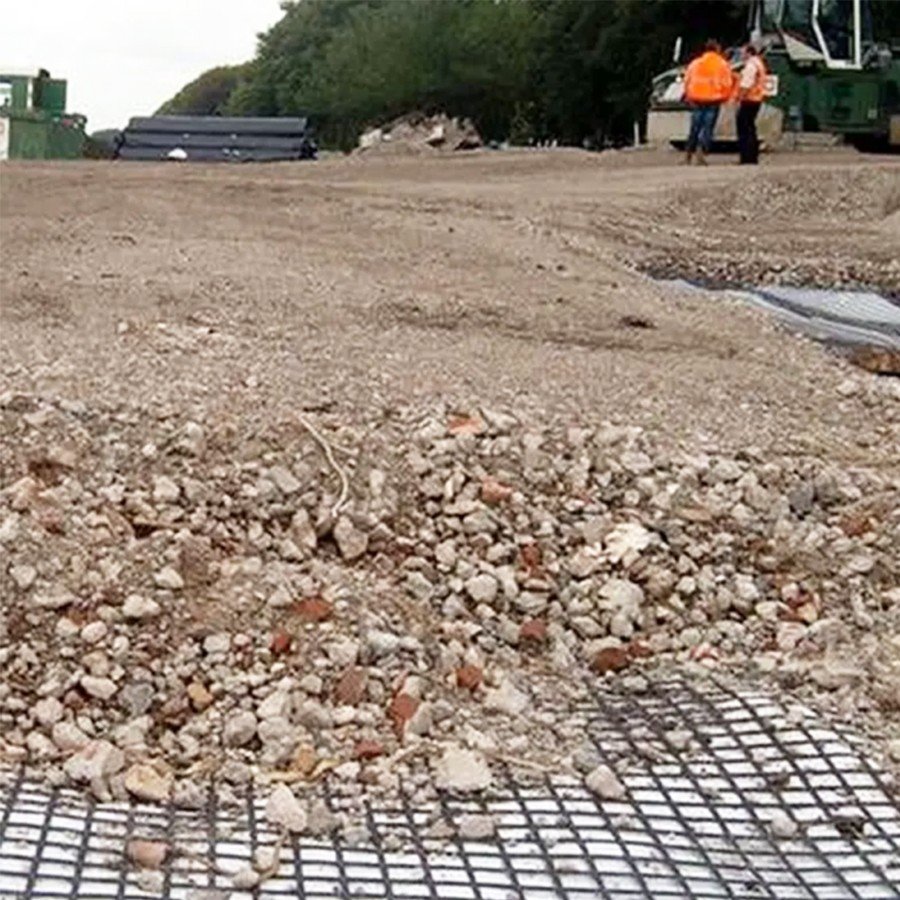

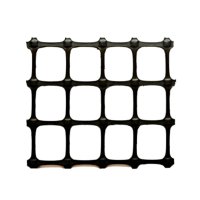
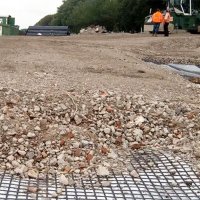
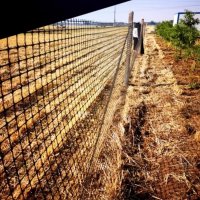
PP bidirectional geogrid is a high-strength geosynthetic material made of polypropylene (PP) through extrusion, punching, heating, and longitudinal and transverse stretching. Its main function is to improve the bearing capacity of soil and enhance the stability of roadbed. It is widely used in various infrastructure construction.
Features:
High strength: It has good tensile strength and tear resistance, can effectively disperse the load and improve the bearing capacity of the foundation.
Corrosion resistance: Polypropylene material is acid and alkali resistant, anti-aging, and suitable for various harsh environments.
Strong stability: The two-way stretching process enhances the overall stability of the material and ensures long-term use.
Convenient construction: Light weight, easy transportation, simple laying, help reduce construction costs.
Application areas:
Road and railway foundation reinforcement: enhance the bearing capacity of the foundation and prevent the road surface from cracking and sinking.
Dyke and slope protection: effectively improve the stability of the slope and reduce soil loss.
Airports, parking lots, docks: improve foundation conditions and prevent uneven settlement.
Greening projects, landfills: used for soil reinforcement and ecological restoration.


Customized service:
Specification customization: Mesh size, tensile strength, width and other parameters can be adjusted according to customer needs.
Color selection: Black is the conventional color, and other colors can be customized.
Packaging method: Roll and cut pieces are supported, and identification labels can be added for easy management. Special needs: Special treatments such as anti-UV and anti-aging can be provided to adapt to different working conditions.
Production scenario:
Raw material screening: Use high-quality polypropylene particles to ensure stable product performance.
Extrusion molding: Use high-precision equipment for extrusion and punching to ensure uniform hole diameter.
Stretching process: Biaxial stretching technology improves product strength and makes it more durable.
Quality inspection: Strictly test tensile strength, ductility, and durability to ensure qualified delivery.
Delivery scenario:
Standard packaging: Wrapped in plastic film to prevent dust and moisture to ensure safe transportation.
Efficient logistics: Cooperate with multiple logistics companies to ensure fast delivery to national and overseas markets.
Order tracking: Provide logistics tracking services to ensure that customers are aware of the delivery progress in real time.




Product Certification and Certificates:
ISO 9001 Quality Management System Certification
CE Certification (Applicable to European Market)
SGS, BV, Intertek Third-Party Test Reports
Other specific country or industry standard certifications (customizable)




FAQ:
Q1; What are the conventional specifications of PP bidirectional geogrid?
A1; Common specifications: 15KN, 20KN, 30KN, 40KN, 50KN, etc., which can be customized according to needs.
Q2; What is the difference between PP bidirectional geogrid and other types of geogrid?
A2; PP bidirectional geogrid is mainly used to carry uniformly distributed loads, while unidirectional geogrid is suitable for occasions requiring higher longitudinal strength (such as retaining walls).
Q3; How to choose the appropriate geogrid specifications?
A3; It depends on the geological conditions of the project, load requirements and other factors. It is recommended to consult professional technicians to recommend the appropriate model.
Q4; How to store PP bidirectional geogrid?
A4; It should be stored in a dry and ventilated environment, avoid direct sunlight, and prevent aging.
Q5; Can you provide samples?
A5; Free samples can be provided, but the shipping cost needs to be borne by the customer.
 PP Biaxial Geogrid
PP Biaxial Geogrid
PP bidirectional geogrid is a high-strength geosynthetic material made of polypropylene (PP) through extrusion, punching, heating, and longitudinal and transverse stretching. Its main function is to improve the bearing capacity of soil and enhance the stability of roadbed. It is widely used in various infrastructure construction.


